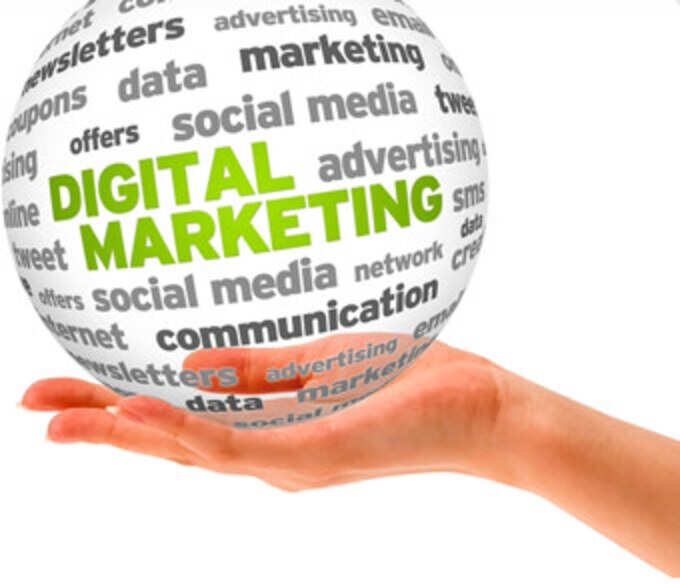 How the apt use of the digital medium has led online-based startups to join the unicorn club in a matter of few years, has compelled the big daddy’s to rethink on the ways they have been communicating with their target markets in this digital age.
How the apt use of the digital medium has led online-based startups to join the unicorn club in a matter of few years, has compelled the big daddy’s to rethink on the ways they have been communicating with their target markets in this digital age.
The age old FMCG companies as a result, are increasingly shifting focus from traditional to digital marketing methods for bridging audience passion with business objectives more quickly and efficiently, in a bid to stay competitive in the market.
Notably, with the rising internet penetration and with 61% of global online consumers using the web to research their grocery shopping according to a Neilson study, opportunities for FMCG marketers on the digital platform lay galore. Many seem to have found their way into it already. Say for example Coca Cola. The company encouraged conversations to happen about their brand with a multi-channelled digitally focused ad campaign full of relevant, engaging and viral content. Another one is Cadbury's "Chocolate Charmer" online advertising campaign which provided ROI almost 4 times higher than their TV campaign. The chocolate brand ran a cross-media campaign for its Dairy Milk brand, covering TV, online ads and
As digital is known to be the fastest-growing revenue stream in the retail industries, the need of the hour is for 4Ps of price, place, product and promotion to be put in the digital marketing context. “Companies are increasingly trying to redefine their strategy to this effect. Some of the things they do now are being able to deliver discounts and offers in real time direct to the consumer for immediate one-time redemption through retailers. This enables shopper centric utility delivering inspiration and information in the shopper journey. Moreover, the consumer engagement via digital marketing generates a huge amount of data providing insights into how consumers choose and buy products that are valuable for product development, the ongoing development of the consumer experience and in trading negotiations with retailers,” says consumer and retail expert, Akhil Bajaj.
“Its ability to facilitate a two-way conversation also provides feedback on current products and services, enabling propositions to be adjusted and optimized on a continuous basis. It is possible to use the audience or just those who are passionate for R&D purposes,” he says, adding that the potential of the digital medium over traditional methods proves that it is the way forward for FMCG companies in branding and marketing their products, a fact that they are fast realizing.
Bharat Rajamani, Director, Digital & Social Media Analytics at Ernst&Young, meanwhile, feels FMCG have started integrating their print and TV communications on digital platform. “They are already seeking feedback on their TV campaigns, inviting suggestions to name their upcoming brands and even taking up social issues. The TVCs are played on the various social media platforms of the brand. The chances of them getting viral is extremely higher compared to a traditional media medium. This is a platform where the consumers become the brand advocates and promote the product for free,” he says.
However, several experienced marketing professionals we spoke to, feel that the real challenge that poses FMCGs at this time is to craft a holistic marketing strategy.
“They need to think how to balance both - traditional and new media - to achieve the best results. Consumers increasingly have limited mental capacity and time, so brands need to earn their right to have a role in peoples' lives. It's important to create propositions which are broader than the core product essence, and distributed through a range of touch points," says Rajesh Singh, former senior marketing professional in Unilever with 15 years of experience in consumer goods.
One example would be ice cream brand PaddlePop, which drove significant consideration and share in India through a brand landscape consisting of a multi-part movie on Cartoon Network, experiential roadshows, online games and conventional media.
Rajesh feels apart from the web, mobiles are also a huge potential marketing platform that not many FMCG companies have been able to understand.
“As the sophistication of mobile devices improves, there is a huge opportunity for marketers to deliver compelling brand messaging where consumers are making their purchase decisions,” he says.
On similar lines, Bharat says: “Digital and internet have a reach out to consumers who do not have access to TV, radio or the print medium but have a mobile phone especially in the Indian context. Looking at sources like Facebook, YouTube, Twitter,
Interestingly, Wal-Mart has an app that senses when customers enter a store and suggests switching their phone to "store mode." In this mode, shoppers can interact with special QR digital signage located throughout stores to access useful product information.